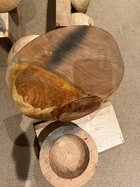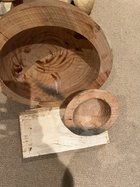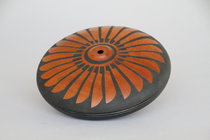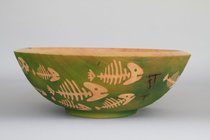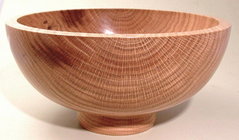Has anyone experienced blueish black stains in bowl blanks such as the attached cherry wood photos? My first thought was iron stain but I haven't found metal in the logs I turned into blanks, then cored a few weeks ago.
When picked up from a local landscaper I noticed stains on the end grain face of half the logs (no, I should not have taken those). At the time I shrugged them off as a possible chemical reaction with the chain saw that was surface deep. As you can tell, these stains are on both sides of the large bowl running through the wall. They're also on the small blank pictured and on the other stained blanks I cored. When the wood was very wet it looked like someone drew lines with spray paint.
The tree itself had to be at least 40 years old (22" or larger trunk diameter) so possibly there was interaction with metal long ago. If any of you can share insight I'd really appreciate it. Unique features can be artistically pleasing but I don't find that the case here. I'm hoping the stains fade in the drying process. Thanks again for any helpful thoughts.
When picked up from a local landscaper I noticed stains on the end grain face of half the logs (no, I should not have taken those). At the time I shrugged them off as a possible chemical reaction with the chain saw that was surface deep. As you can tell, these stains are on both sides of the large bowl running through the wall. They're also on the small blank pictured and on the other stained blanks I cored. When the wood was very wet it looked like someone drew lines with spray paint.
The tree itself had to be at least 40 years old (22" or larger trunk diameter) so possibly there was interaction with metal long ago. If any of you can share insight I'd really appreciate it. Unique features can be artistically pleasing but I don't find that the case here. I'm hoping the stains fade in the drying process. Thanks again for any helpful thoughts.

